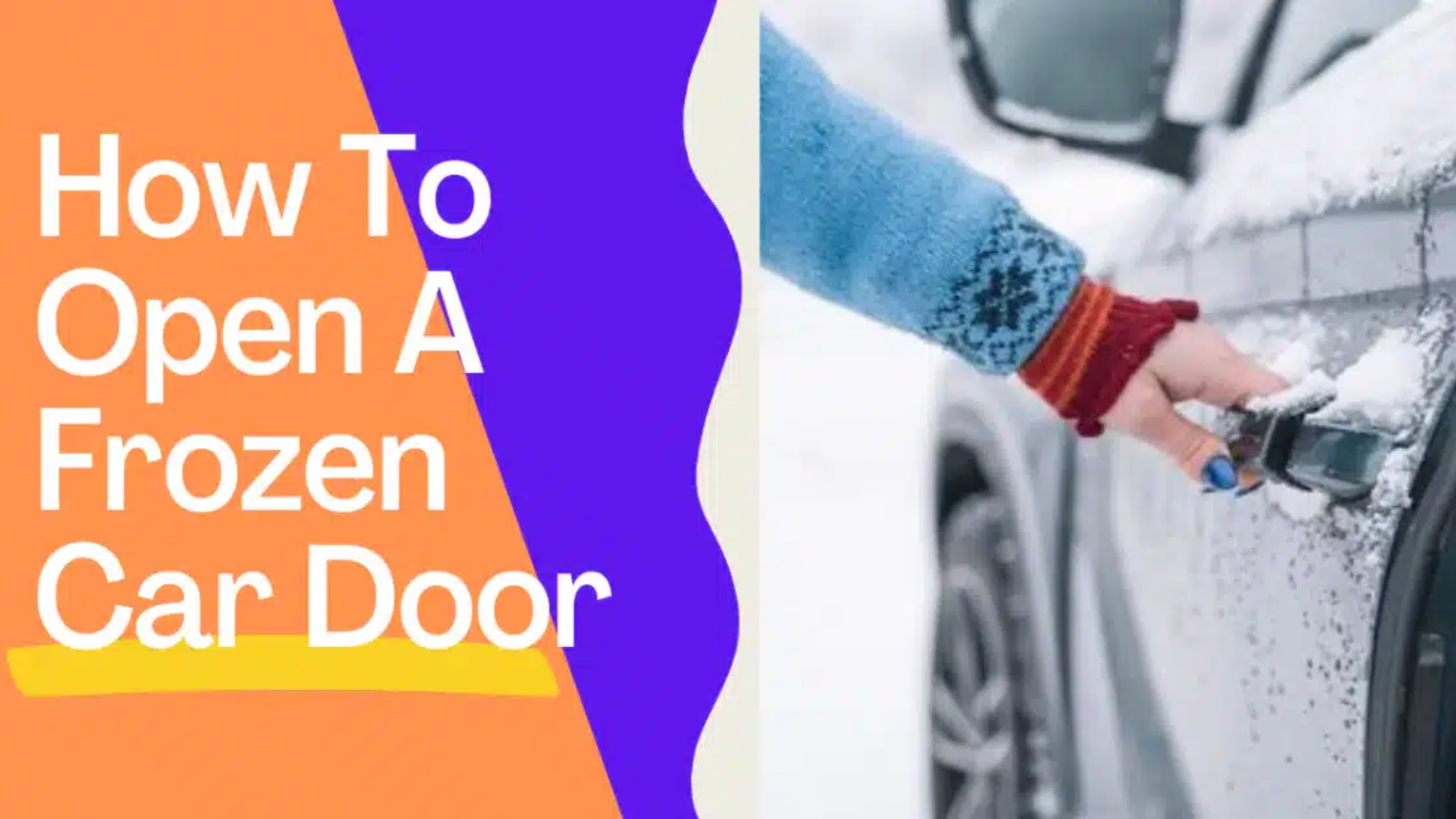In this comprehensive guide of Minutes Locksmiths, learn the step-by-step process to effectively how to open a frozen car door. Say goodbye to car lockouts during winter with our tips and tricks. Winter is a beautiful season, but with the plummeting temperatures, comes the challenge of dealing with frozen car doors. If you’ve ever found yourself in a situation where you can’t open your car door, you know how frustrating it can be. Fear not, Minutes Locksmith has got you covered with this step-by-step guide on how to open a frozen car door.
Breaking the Ice: A Comprehensive Guide on How to Open a Frozen Car Door
Step 1: Try the Lock
First things first, try to unlock the door with your key. If the lock is frozen, warm the key with a lighter or hairdryer to thaw it. If the lock still doesn’t open, try using a lock de-icer, which you can purchase at most automotive stores.
Step 2: Apply Heat
If the lock is still frozen, use a heat source to thaw the door. You can use a hairdryer, a heat gun, or even warm water. Ensure that the water is not too hot as it can damage the paint on your car. Apply the heat to the lock and the surrounding area until the ice has melted.
Step 3: Lubricate the Lock
Once the ice has melted, spray some lubricant into the lock to prevent it from freezing again. You can use a silicone-based lubricant or even WD-40.
Step 4: Try the Handle
If the lock is still frozen, try pulling on the door handle. If the handle is frozen, use the same heat source you used on the lock to thaw it.
Step 5: Be Patient
If all else fails, you may need to wait for the ice to thaw naturally. In the meantime, try pushing on the door to break up any ice that may be preventing it from opening.
How to open frozen car door handle?
If the car door handle is frozen, use the following steps to open it:
Step 1: Try the Lock
First, try to unlock the door with your key. If the lock is frozen, warm the key with a lighter or hairdryer to thaw it. If the lock still doesn’t open, try using a lock de-icer, which you can purchase at most automotive stores.
Step 2: Apply Heat
If the lock is still frozen, use a heat source to thaw the door handle. You can use a hairdryer, a heat gun, or even warm water. Ensure that the water is not too hot as it can damage the paint on your car. Apply the heat to the lock and the surrounding area until the ice has melted.
Step 3: Try the Handle
Once the ice has melted, try pulling on the door handle. If the handle is still frozen, use the same heat source you used on the lock to thaw it.
Step 4: Lubricate the Lock
Spray some lubricant into the lock to prevent it from freezing again. You can use a silicone-based lubricant or even WD-40.
How to prevent frozen car doors
Fortunately, there are a few things you can do to prevent frozen car doors. First, make sure to keep your car as dry as possible. This means wiping off any snow or ice that’s collected on the outside of your car, as well as removing any excess moisture from the inside of your car.
You can also apply silicone-based lubricant to the rubber seals around your car doors. This will help keep them flexible and prevent them from cracking.
Finally, consider using a de-icer or lock lubricant on your car locks. These products can help prevent locks from freezing and make it easier to unlock your car door.
If you do find yourself with a frozen car door, don’t force it open. This can cause damage to your car and make the problem worse. Instead, try using a hair dryer or hot water to melt the ice, or call a locksmith for help.
Why do car doors freeze shut?
Winter weather can be tough on your car, and one of the most frustrating problems it can cause is frozen car doors. If you’ve ever found yourself struggling to open your car door on a cold winter morning, you know how frustrating it can be. But why do car doors freeze shut in the first place? Here are a few reasons.
Moisture
The main culprit behind frozen car doors is moisture. When the temperature drops, any moisture that’s present on your car can freeze. This includes any water that’s collected on the outside of your car, as well as any moisture that’s present inside your car.
Condensation is a common cause of interior moisture. When you breathe, sweat, or even just bring snow into your car on your boots, you’re introducing moisture into the air. This moisture can then settle on the inside of your car windows and doors, where it can freeze.
Rubber Seals
Rubber seals around your car doors help keep out moisture, but they can also contribute to frozen doors. If these seals are old, damaged, or not properly maintained, they can crack and allow moisture to seep in. Once this moisture is present, it can freeze and cause the door to stick.
Frozen Locks
Finally, another common cause of frozen car doors is frozen locks. If moisture gets into your car door locks, it can freeze and prevent the key from turning. This can make it difficult or even impossible to unlock your car door.
In conclusion, a frozen car door can be frustrating, but it’s not the end of the world. With a little patience and some simple tools, you can unfreeze your car door and get back on the road. Remember to take steps to prevent future frozen doors, and seek professional help if you need it.


